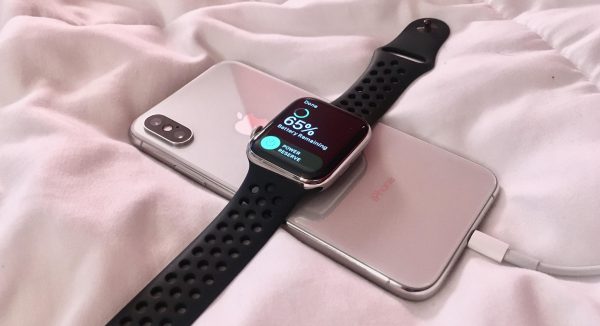
How to Charge Apple Watch Without the Official Charger
A dead Apple Watch can be a frustrating sight, especially when you’re caught without its magnetic charger. But fear not, fellow Apple Watch wearer! Before resigning yourself to a powerless smartwatch, here are some alternative methods to charge your Apple Watch without the official charger.
Important Note: While these methods can provide a temporary charge, they might not be as efficient or safe as using the official Apple Watch charger. Use them only in a pinch and prioritize acquiring a proper charger whenever possible.
The Power of the Power Bank:
1. The Right Cable: You’ll need a portable power bank with a USB-A output port and a cable with a USB-A connector on one end.
2. Magnetic Matchmaker: While not ideal, some users have reported success by creatively positioning the Apple Watch’s charging pad on the power bank’s flat surface. Experiment to find a stable magnetic connection.
3. Mind the Heat: Wireless charging can generate some heat. Monitor your Apple Watch during charging for any excessive warmth, as this could damage the battery.
The Universal USB Port (Limited Utility):
1. Compatibility Check: This method only works with Apple Watch Series 3 and earlier, due to a design change in later models.
2. Cable Quandary: You’ll need a cable with a USB-A connector on one end and a special magnetic dock on the other end, designed for these older Apple Watch models.
3. Lower Power Delivery: Charging via a USB port might be significantly slower than using the official charger.
Desperate Times, Desperate Measures (Use with Caution):
1. Wireless Charging Stand (Not Recommended): Some users report limited success placing their Apple Watch on a wireless charging stand designed for smartphones. However, this method is highly discouraged due to potential misalignment and overheating risks.
2. DIY Methods (Avoid!): For safety reasons, we strongly advise against attempting to charge your Apple Watch using homemade methods or improvised power sources. There’s a high risk of damaging your watch or even causing a fire.
Prevention is Key:
i. Charging Habits: Develop a regular charging routine to avoid a completely drained battery.
ii. Carry a Spare Charger: Consider keeping a spare charging cable in your bag or workplace for emergencies.
iii. Wireless Charging Case (Optional): Invest in a portable case with built-in wireless charging capabilities for added convenience on the go.
By following these tips, you should be able to revive your Apple Watch in a pinch. But remember, these methods are temporary solutions. Prioritize obtaining the official Apple Watch charger for safe and efficient charging in the long run.
Here are some frequently asked questions to complement your blog post on charging an Apple Watch without the official charger:
Q: I don’t have a power bank with a USB-A output port. Can I use a different type of power bank?
A: Unfortunately, no. You’ll need a power bank with a USB-A output port to use the method described in the blog post. Power banks with USB-C output ports are becoming more common, but they won’t work for charging your Apple Watch this way.
Q: I have an Apple Watch Series 5. Will the USB port charging method work for me?
A: No, the USB port charging method only works for Apple Watch Series 3 and earlier models. The design of the charging port was changed in later models.
Q: Is it safe to use a wireless charging stand for my Apple Watch?
A: We strongly advise against using a wireless charging stand designed for smartphones to charge your Apple Watch. The alignment might be imprecise, and there’s a risk of overheating which could damage your watch.
Q: My Apple Watch charged a little using the power bank method, but it’s still slow. Is there anything I can do?
A: The methods mentioned in the blog post are for temporary emergencies. For optimal and safe charging, prioritize getting your hands on the official Apple Watch charger.
Q: I found my old Apple Watch charger, but I’m worried it might be damaged. What should I do?
A: If your charger shows any signs of damage, such as fraying wires or loose connections, it’s best to avoid using it. A damaged charger could pose a safety risk. It’s better to get a new charger to ensure safe and efficient charging.

Leave a Reply